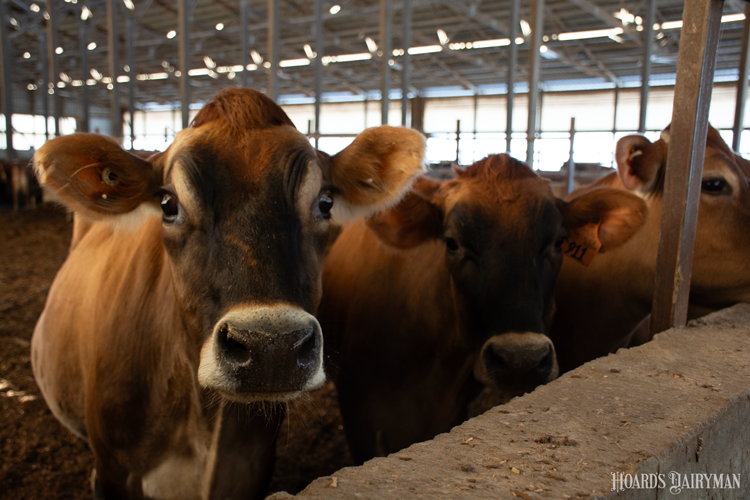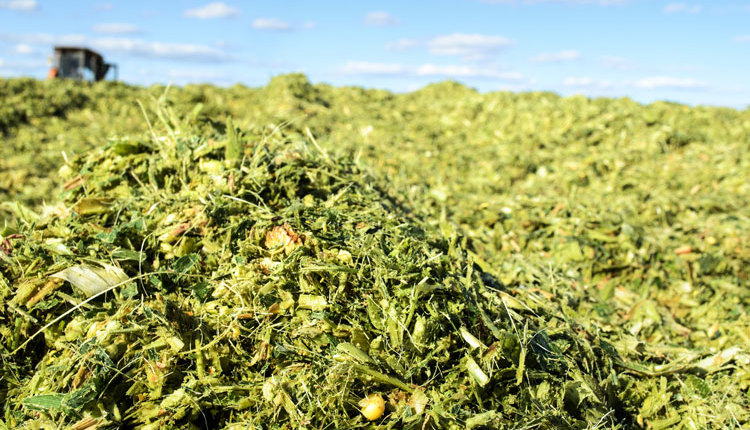
When I was about 9 years old, we rented 40 acres of a reclaimed strip mine for dry cow pasture. It was close to the farm, which was nice, but it was better rabbit country than cow pasture. However, it was available, so Dad took it, even though we had to trailer the cows back and forth.
There was a small, basic corral in this pasture. Dad would take feed over daily, and if there were cows to shuffle, he would take us two boys along to help catch, sort, and load the ones we needed.
A neighbor asked to put a few mid-weight beef calves in this pasture, and Dad agreed. I don’t know what interactions these calves had with humans in the past, but seemingly none had been good. They were wild, in plain words.
The time came to catch them. We fed the group in front of the corral like usual, but when the three of us circled them and started to close in, the heads, tails, and heels went up, in that order. They blew through our thin line of heroes like horse flies through woven wire.
We tried again and again. We ran, waved our arms, and threw rocks, but those steers had the upper hand on us, and they knew it. As soon as they felt the first bit of pressure, they galloped off to join the rabbits. We trudged, panting, back to the corral to try to come up with a better plan.
A different approach
Dad asked Paul to come help. Paul was a dairyman in his 50s who was known to do things like load heifers onto a cattle trailer by himself out in a pasture with no corral by parking the trailer alongside the fence and stringing out a hank of polywire. He agreed to assist.
A few days later, we tried to round up the wild beef calves again. This time we had a few more people and a few more panels set up to funnel those high-headed steers into the corral. I distinctly remember the cattle at the plastic bunks and us forming a semicircle around them, closing in. But this time, Paul was in charge.
When we were 35 yards out from the bunk, the heads came up. Us boys tensed, ready to start running to head them off.
Just then, Paul’s voice, calm and in charge, said, “Back up, everybody!” We all took several steps backward, and we stood there. The steers looked at us backing away, then the heads went back down into the feedbunks. Paul gave them a few minutes, then directed us, “Move forward.”
This dance continued for maybe 20 minutes. We stepped forward, the heads came up, and we stepped back. There was no yelling, no running or rocks, just Paul’s calm coaching. Suddenly, those steers were finished — they turned and walked into the corral, and we shut the gate. Game over.
Know your zones
Twenty years after this educational episode, I was privileged to attend a one-day seminar on low-stress livestock handling. The speaker illustrated the zone of influence, which is the distance where the animal first looks at you, and the flight zone, which is where they move away. We work cattle by moving in and out of these zones.
Paul understood these principles by keeping us just outside of the flight zone, applying pressure, then release, then pressure, then release. He kept things calm in that pasture instead of panicking a bunch of steers that, with reason, had a decidedly wary attitude toward human beings.
Another point made at the seminar was that we don’t want cattle to see us as predators about to eat them. Rather, we want to be the boss cow. Cows communicate pecking order efficiently with body language. Boss cows walk confidently through the herd; the underlings turn aside to show submission.
We would do well to learn cow language. Paul was a master at reading their responses and replying by shifting our positions to tell those steers what we, the herd bosses, wanted them to do. Since they were not panicking, they submitted.
One visual I found helpful was to imagine a 10-foot pole sticking straight out of my chest and using this to push on a cow’s head in order to steer its course. It works because moving straight at a cow applies pressure, but turning sideways or backing away releases that pressure.
Also, cattle get worried when they know we are around but can’t see us. So, when you’re following a cow up a freestall alley, walk in a zig-zag so that as the cow swings its head from side to side to make sure you are not getting too close, it can track you and know that as long as it keeps going, it can keep you out of its flight zone, as well as the blind spot directly behind it.
The speaker noted, “If you don’t know what to do with your hands, put them in your pockets.”
Cattle have a tipping point, or point of balance, near the front of the shoulder. To illustrate this, imagine you are standing even with a cow’s tipping point, maybe 10 feet away. It is looking at you with one eye, waiting nervously for the cue from the boss on what to do next. Take a step forward, parallel, and the cow puts it in reverse. Take a step or two back, again parallel, and it goes forward. Turn and go straight toward it, and the cow will wheel and run, for now it sees a predator coming.
Well-designed facilities make cattle handling a pleasure, for the most part. But I would much rather work in basic facilities with good handlers than an elaborate setup with people who go after cattle like a bird dog flushing a covey of quail, with about the same results.
There are many situations in life besides cattle handling where we get tense, and perhaps more often than not, the best thing to do is to back up several steps, with our hands in our pockets, until the heads go down a bit.



